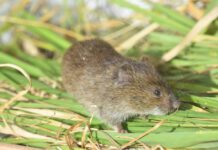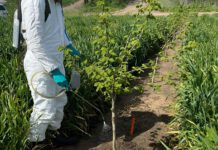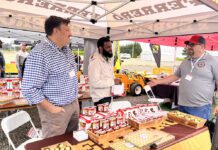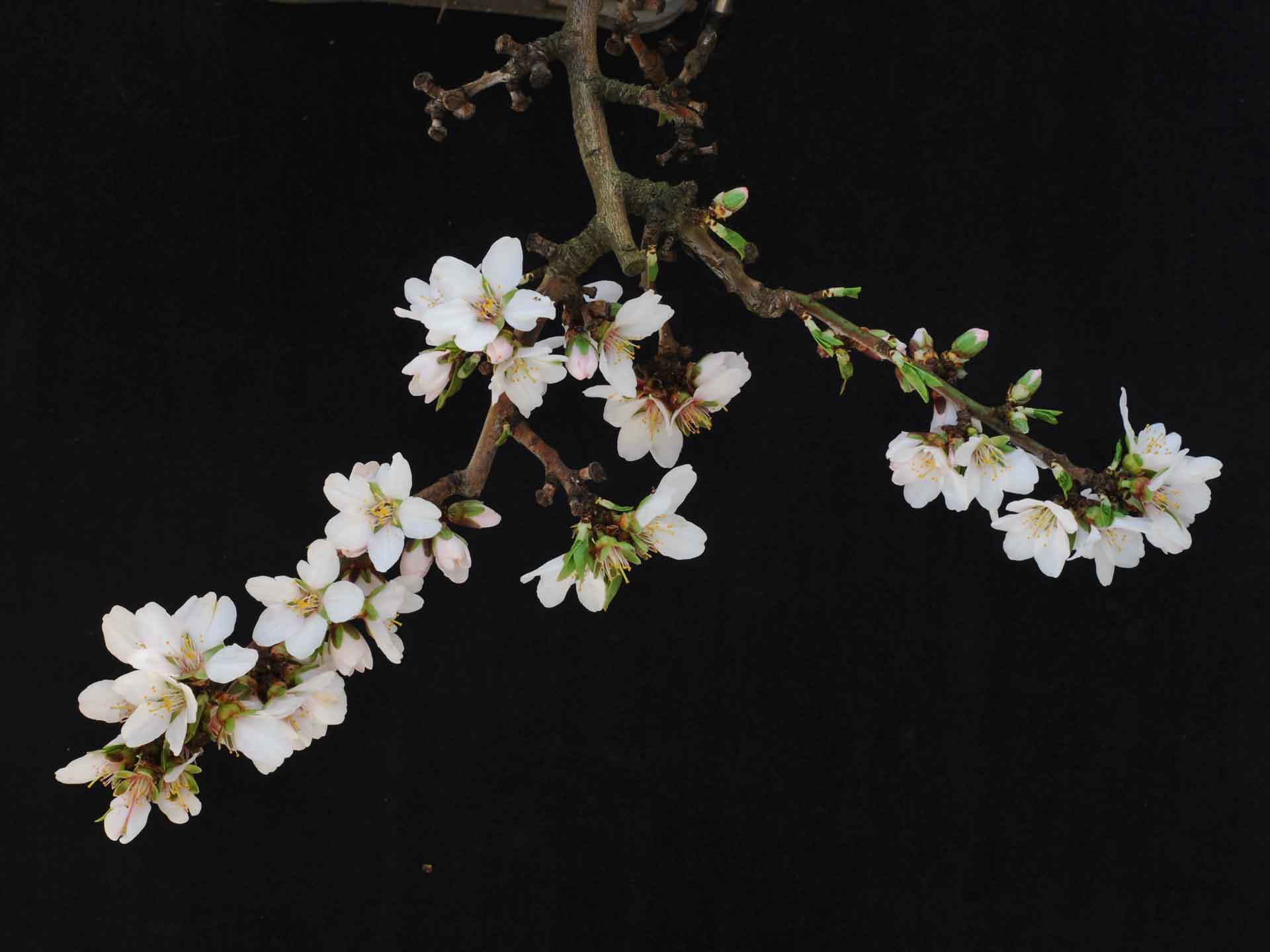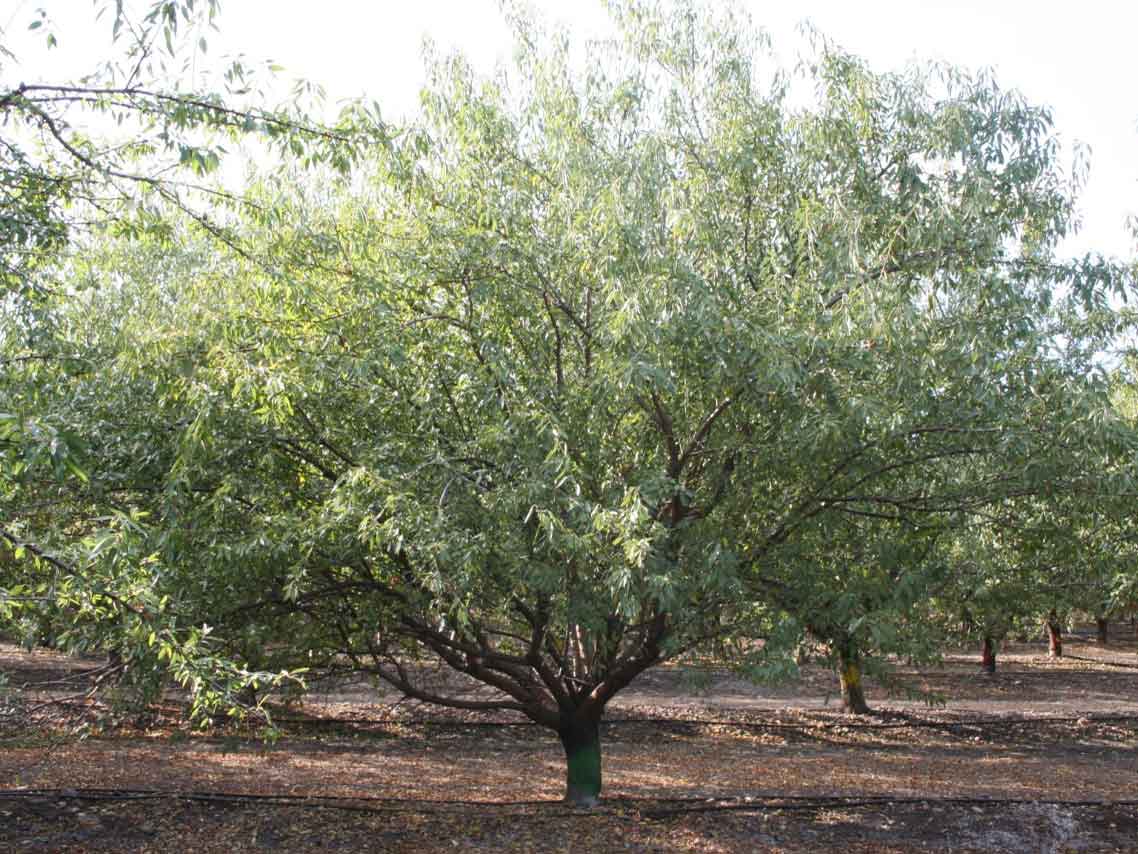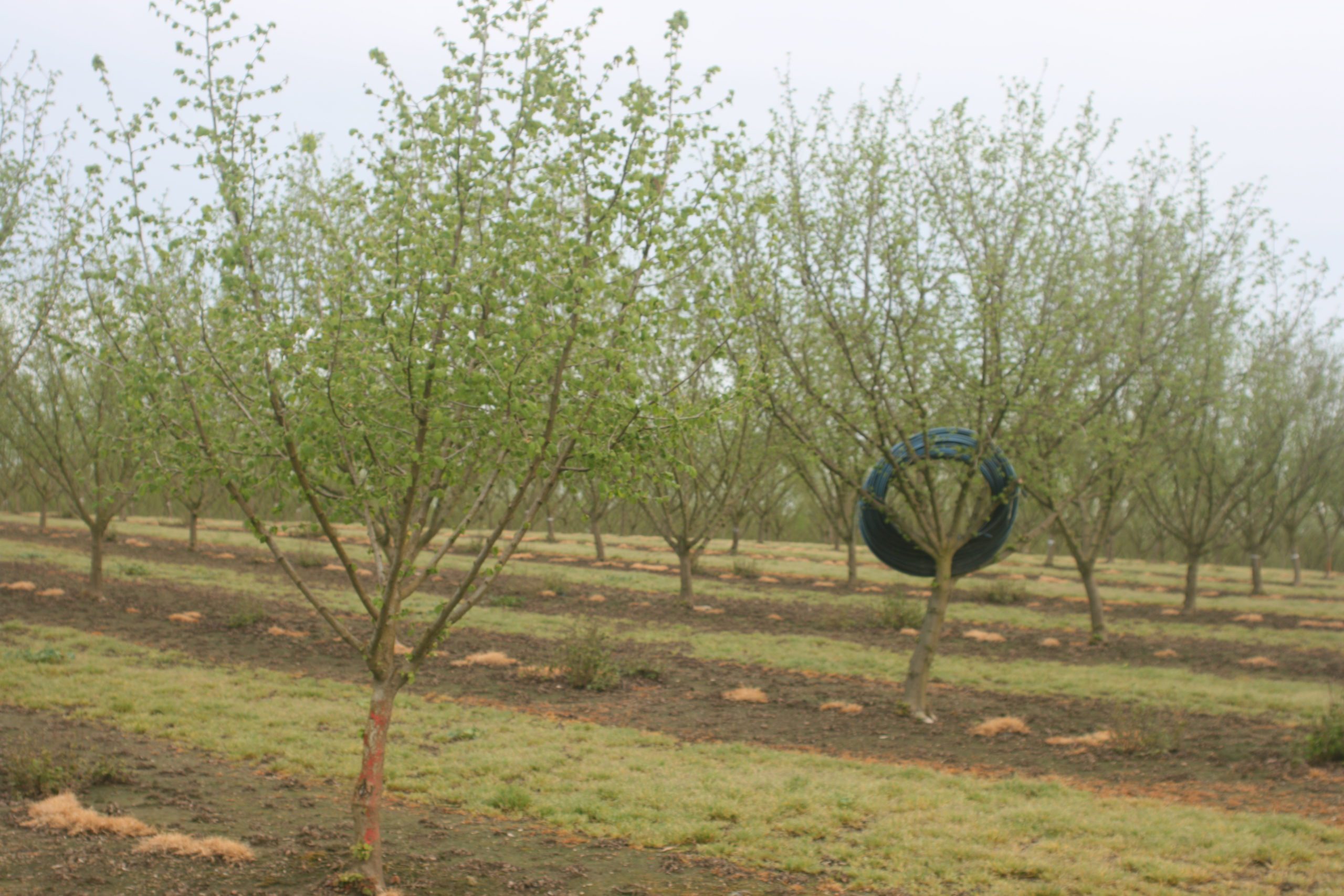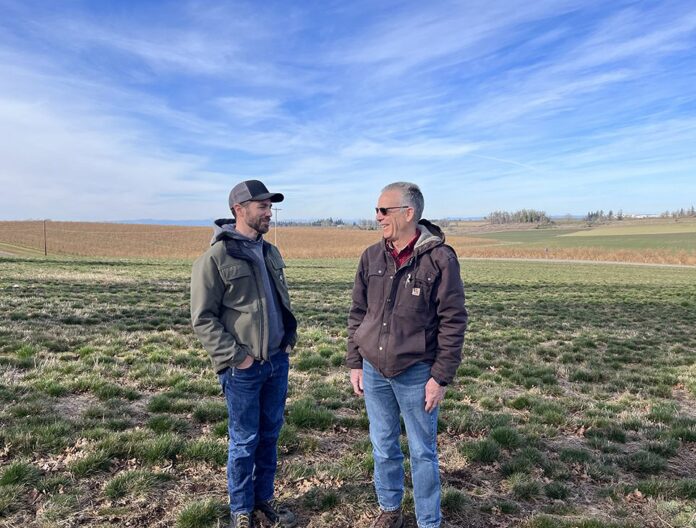
Listen to the audio version of this article. (Generated by A.I.)
Turning grass seed fields into hazelnut orchards is becoming a common agricultural conversion in Oregon, according to father and son Doug and Alex Duerst, production team members of Ioka Farms, where fine fescue grass seed production takes up half of the company’s 5,000 acres. Most of the other half is in other seed crops: perennial ryegrass, forage brassicas, meadowfoam, wheat and oats.
“The trend would indicate there is an economic advantage,” said Shannon Cappellazzi, a soil organic management specialist for Oregon State University’s Extension program. “If for no other reason than diversification.”
But completely eliminating grass as a crop in the orchard floor would have a negative environmental impact, she said. Cappellazzi had discussed plans with the Duersts before they planted hazelnuts. Ioka planted hazelnuts without removing the grass seed crop and continues to maintain grass in the orchard aisles.
Acreage Expands Amid Industry Momentum
Today, nearly 200 acres of the Ioka Turf & Forage operation is in hazelnuts (not a small number as Oregon orchards go). Owners Duersts and Doerflers (the farm office is on the original 80-acre 1877 homestead) planted their first 30 acres to hazelnuts in 2011 and have been adding acreage since then. They are not alone. Although there are no specific statistics for how many of the approximately 1,000 Oregon hazelnut growers are also growing seed crops, the Duersts suggest they have noticed more and more seed growers adding hazelnut acreage.
Converting seed land to nuts is not for everyone, the Duersts suggest, and Cappellazzi agrees. Still, market events both local and worldwide make it appealing.
“Grass is good for trafficability, which means the growers can get in the field (whether for harvest or applying products) when they want to, even when there is substantial rain. It also helps regulate soil temperature, which is good for moisture considerations. These are two of the primary benefits Ioka and several others have talked with me about, and it seems to be enough benefit to spend the money on grass seed and the time to manage them,” she said. “Grass does an amazing job of keeping soil in place, reducing erosion, and adding carbon to the soil, cycling nutrients, encouraging water infiltration and water storage.”
The process is still experimental, Cappellazzi said, but at Ioka Farms, the conversion seems to be working, providing erosion control for the sloping orchard in the foothill of the western Cascades. On the wet valley floor, grass provides trafficability between orchard rows even during the rainy season, Cappellazzi said.
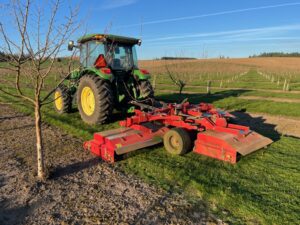
Hazelnuts Gaining Favor Over Grass Seed
Jimmy Lee, owner of Third Knight Farms, has converted all 600 acres of his Willamette Valley Albany-area grass seed ground. Typical of valley grass seed land, Lee must contend with wet conditions, tiling much of his land as part of the conversion.
Despite challenges, Lee said, “Long-term, markets look more profitable for hazelnut over grass seed production.”
By 2011, when Ioka planted its first acreage, hazelnuts were looking like an attractive crop. New cultivars promised to resist Eastern Filbert Blight. Labor and other costs for seed crops were rising, while hazelnuts seemed less labor-intensive after initial establishment, and seed crop prices were not as good as nut prices at the time, Alex said.
“We thought it was an easy choice for our operation,” Alex said.
In farming, as in life, reality tears up the best-laid plans. There were initial equipment costs. Although some tractors used in the Ioka seed fields could be tapped, new orchards required new mowers, sprayers and harvesting equipment. Tree care and maintenance turned out to be a bigger chore than they had counted on, requiring pruning and hedging throughout the tree’s life, including those early three or four nonproductive years.
And although they are moving toward expanding their hazelnut production into non-irrigated acres, weather-related stress has made irrigation necessary on some varieties, an additional expense for now.
Do they regret the conversion? Since they are planning to plant more acres in the coming years, the answer is in action. Although every grower must consider their own circumstance, growing hazelnuts among its seed crops is working on the Ioka farm. As nut prices stabilize, the decision to convert some grassland to orchards appears to be a safe bet.
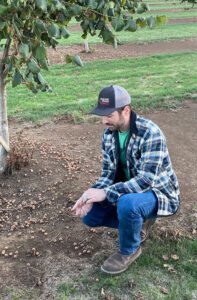
Key Advantages and Ongoing Challenges
The following are several reasons growing hazelnuts on seed land makes sense for Ioka Farms:
Security
“We’re all about diversity,” Alex said about the crops. “We thought it was an easy choice.” Putting all your eggs in one basket is an apt farm-based adage. Adding hazelnuts to their list of crops seemed like a safe bet for their land.
Erosion Control
The hillside Ioka farm’s shallow, rocky topsoil would quickly wash away in the winter if the lanes are left bare, Doug points out. To aid in field operations year-round and control erosion in the winter, the ground between the rows is planted to the same fine fescue that grows in the fields beyond the trees.
Support
The Ioka operations, a combined Duerst and Doerfler family company, were able to invest in the equipment and supplies to plant the orchards and then wait the three to four years before they were productive. Fine fescue harvests between rows helped offset some of the expenses. Nut and seed prices sometimes dip and rise together or in opposition. Growers should be prepared to weather changing markets.
Crop Timing
Work on the summer seed harvest does not interfere with the fall hazelnut harvest. Most of the work on the orchards and seed fields can be performed by Ioka’s own staff and machinery, with contract crews and custom hedging hired when needed.
Crop Integration
The fine fescue growing in the orchard lanes was harvested for the first one to four years after the young trees were planted, creating income to offset the initial establishment costs of the new orchards. Recently, Ioka has begun experimenting with side-discharge mowing, a practice common to macadamia nut orchards in Australia. A modified mower cuts the fine fescue grass and ejects it laterally, creating a mulch layer in the bare tree row, conserving moisture and building back organic material.
“Long-term, markets look more profitable for hazelnut over grass seed production.”
– Jimmy Lee, Third Knight Farms
Are there problems? The men chat about the vole and mice problem endemic to any seed grower, the lack of water on the land, the heat stress, bugs and diseases, mechanical versus hand pruning, considering raising their own seedlings and the questions about whether grass in the drive row is benefiting or hindering nut production. Research is underway.
The Duersts are quick to advise grass seed growers who are thinking of planting hazelnuts in established seed fields. Spraying out grass and then adding tender trees to the ground can destroy acres of trees and hard work, Alex said. Some growers could plant directly into the grass, he said.
“If you’re planning on keeping the existing grass living, best be done when the grass seed stand is relatively young or make sure you don’t have a rodent problem existing before planting trees,” Alex said. “While the traditional practice is to fully terminate the grass seed field, then cultivate, amend the soil and smooth the planting surface, some growers may choose to save some effort and plant into existing grass seed fields.”







